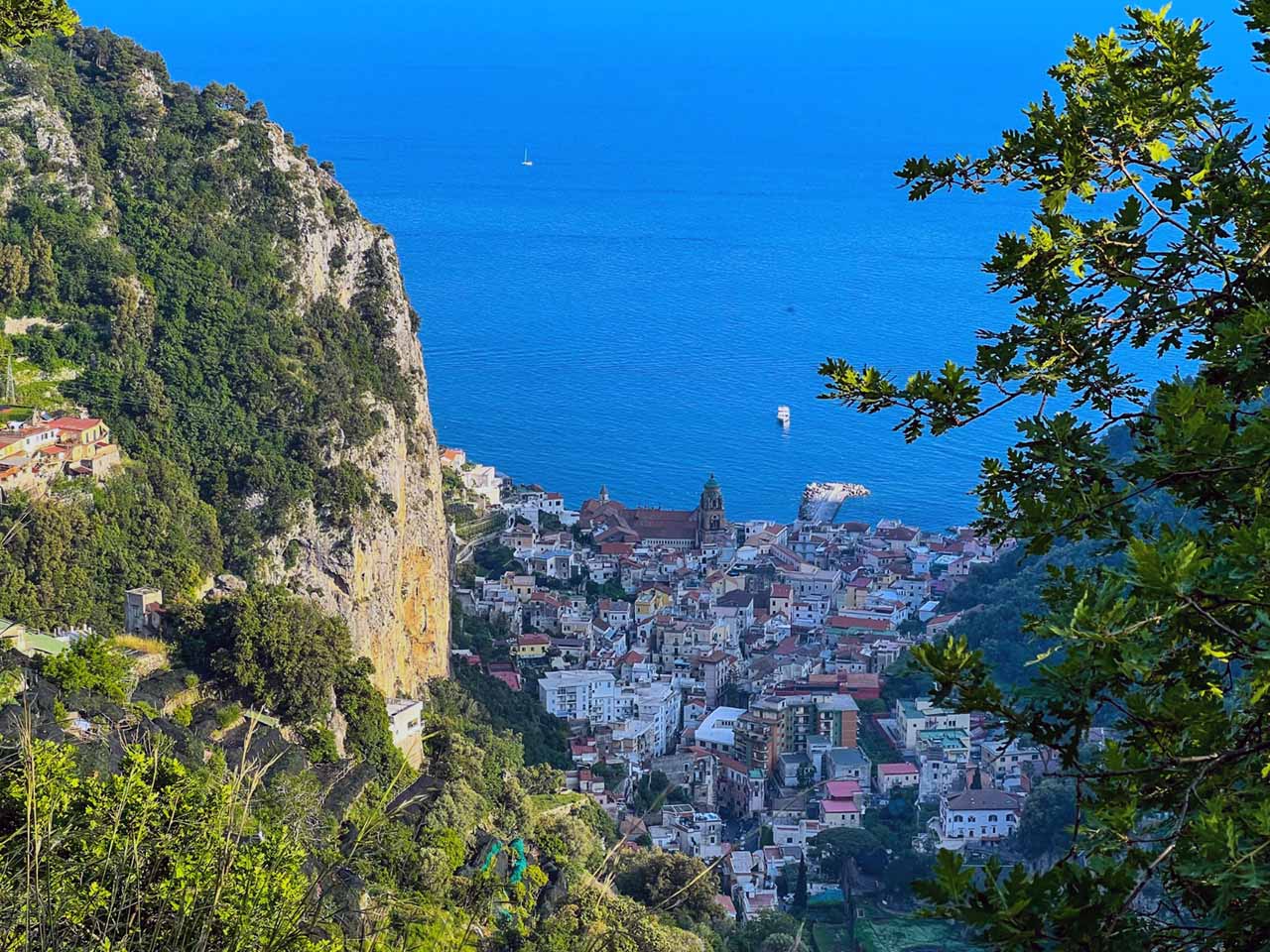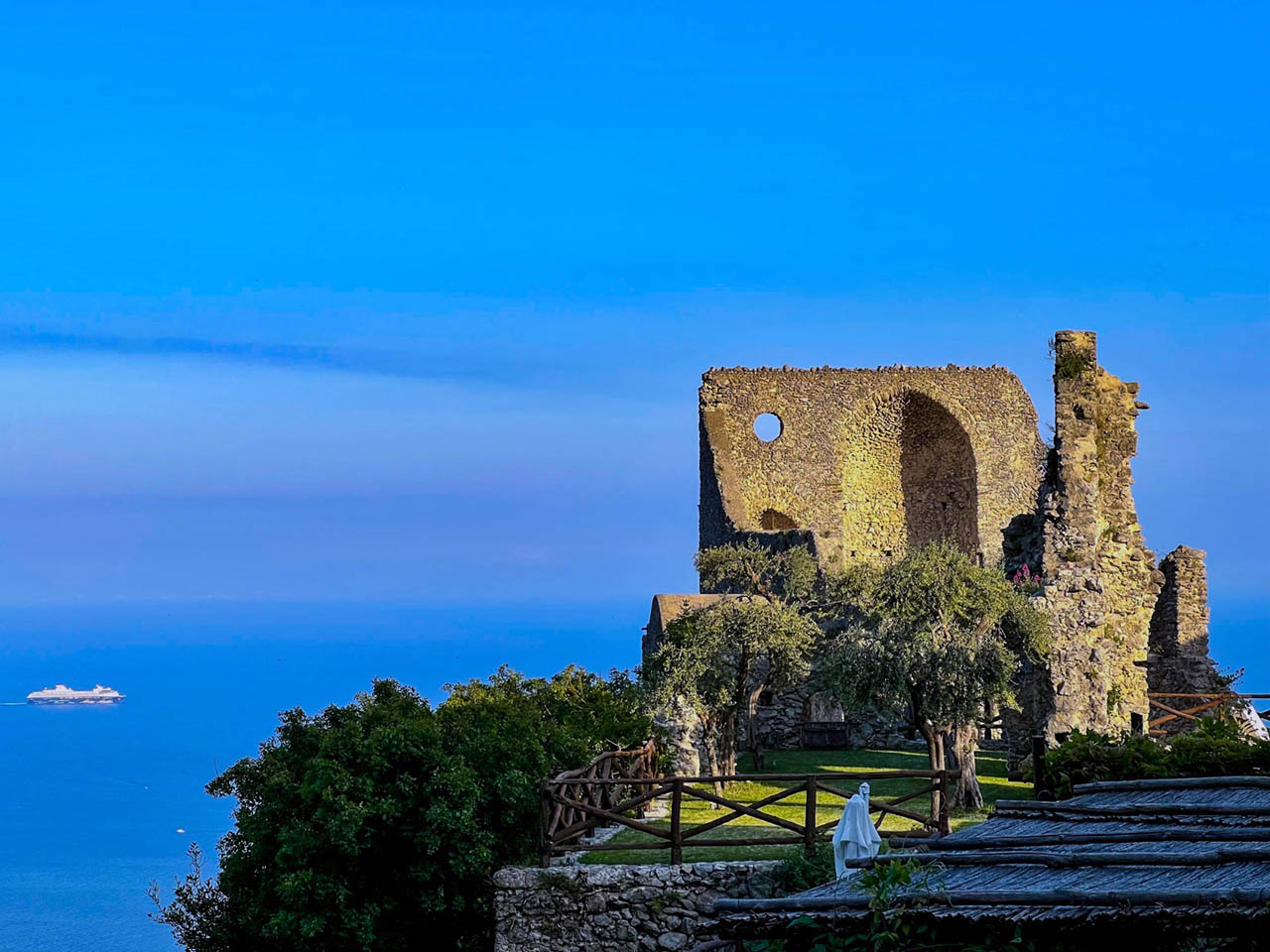It is one of the villages from which the Amalfi Republic was born. A destination for art lovers and devotees of the Christian faith and a destination for trekkers, the small town encapsulates the history of the Amalfi Coast
August 18th, 2022, by Anna Volpicelli, photo by Michele Inserra @cartotrekking
Together with Pontone, it is one of the oldest settlements on the Amalfi Coast, from where the Amalfi Republic was born. The village is wrapped in the Dragon Valley, covered by a mantle where silence and tranquility reign supreme. Minuta is a small medieval village belonging to the six districts of Scala.
A simple life
From the main square, where the Church of the Annunziata is located, the view opens onto one of the most magical settings in the area. From here, a succession of images unfolds, shot after shot, as in a perfect photo album: the walls of the Basilica of Sant’Eustachio, the outlines of Ravello, Pogerola, and the gorges of Atrani and Amalfi, and the infinite horizon of the waters of the Gulf of Salerno.
A perfect marriage is celebrated within an exclusive setting where the sea and the mountains meet and hold hands, supporting each other. On the other side, on dry land, a fountain filled with water quenches the daily thirst of the horses and mules that stroll through the village.

An artistic and religious heritage
The beauty of its location and surroundings are not the only qualities that make Minuta a pole of attraction. An extensive artistic heritage is preserved inside the church’s crypt of the Annunziata. A wealth testified to as early as 1817 by Salazar, a luminary art historian of the time, who already illustrated the value of the frescoes, which he pointed out belong to the 9th-10th centuries, contained in this sacred place.
Various representations interwoven on the three walls have been destroyed, such as that of the Annunciation. Partially visible are the forms of Mary and Elizabeth, central figures in the fresco on the left wall, and that of the Byzantine Christ painted on the cross vault behind the altar, accompanied by representations of St. John the Baptist, St. John the Evangelist, King David and the prophet Daniel.
The Nativity, frescoed above the altar, depicts the intimacy of a pivotal moment in Christian history: on the right is St. Joseph, and below, women wash the newborn baby. On the left, the angel announces the birth of the Redeemer to two shepherds. Finally, on the wall behind the other lower left are depicted St. George and St. Nicholas, with their legend. The crypt of the Church of the Annunciation represents not only a place steeped in mysticism for devotees but also a veritable museum for art lovers.

The path to a natural state
The medieval village is also a destination for trekking lovers. From Minuta starts a path that leads to the upper part of the Ferriere Valley, which completely embraces the territory of Scala. Here among lush greenery and lush nature, are still the ruins of old factories specializing in ironworking of medieval origin.
Waterfalls, gentle sounds of water that accompany this stretch originate from the Canneto River, a river that flows through the Valley, and that, in addition to irrigating crops, also served to energize the ancient paper mills that characterize the lower stretch of the Amalfi area, of the nature reserve. The itinerary from Minuta unfolds like a fable whose tale begins in a civilization that has retained a solid medieval imprint, made up of narrow streets, small glimpses, ancient walls of mules carrying food, and wood and heavier materials, and peasants animating the village streets.
And from the noise of earthly life, the tale continues with its words transporting readers to a more primitive, almost wild dimension, where nature marks with ink every moment of man’s life, laying it bare, and it is here that with extreme humility, everything becomes silent.

